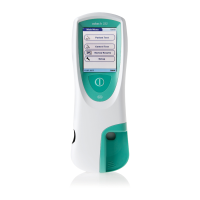What to do if cobas Measuring Instruments shows 'Battery Low'?
- OolewisJul 27, 2025
If your cobas Measuring Instruments meter displays 'Battery Low', it means the battery is running out of power. To resolve this, recharge the battery pack as soon as possible.


